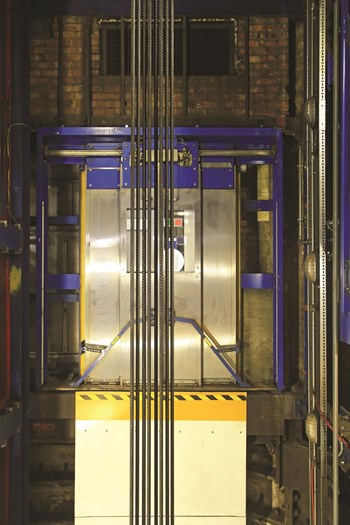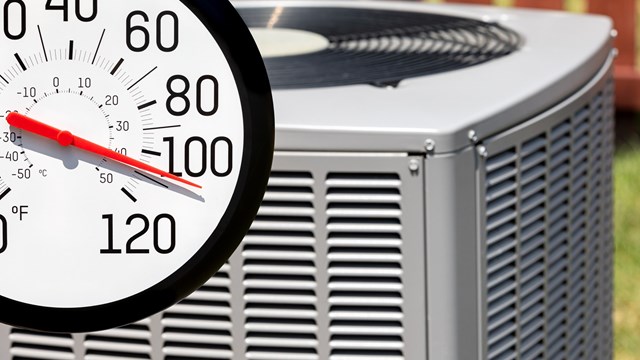
Building amenities such as elevator systems are often taken for granted. But elevators are for more than just avoiding a workout and creating awkward silences between neighbors; they accommodate residents unable to climb stairs and are critical for deliveries and facilitating maintenance workers. At a certain point, no matter the age of the building, the elevator system will need maintenance or even replacement. The key is identifying signs of wear and tear before a breakdown occurs.
“Well, in the old days people used to get an average life span of 20 years. Today it is all microprocessor-based, so 10 years from now the microprocessors will be okay but the cars will require a cosmetic upgrade,” says Marc Roy of Roy Elevator Cabs and Entrances in Avon, Massachusetts. “In the old days the argument was one maintenance visit a month, 12 visits a year with a separate annual safety test. Today, just because you’re on a maintenance program doesn’t mean you’re going to get monthly maintenance.”
Even if a building owner is diligent when it comes to maintaining their elevators, there may come a time when it becomes unreliable and the down time is increased—this could require an overhaul.
“Trying to implement the latest technology is probably the best reason for replacing components. For example, there’s something called the ‘soft starter,’ which is a standard component for hydraulic elevators; it protects the pump motor, today, but wasn’t available 15 years ago. For example, door equipment—it gets the most wear and tear and shows signs of wearing first, so if you wanted to just chase repairs for the doors, you’d be constantly chasing problems. So once you see a few door problems over the course of maybe a year, it’s good to just get all the doors done at once,” says Dennis Driscoll of Atlantic Elevator in Avon, Massachusetts.
“If the majority of the equipment is worn out beyond repair, if you’re going to start pouring money into something that has major problems you’re better off ripping it out and putting a new one in,” says Phil Johnston of Great Northern Elevator in Kensington, Connecticut.
Government Oversight
Since it’s not a question of “if” an elevator will need maintenance, but “when,” it is always best to be proactive. While this includes yearly inspections by certified professionals, when the time comes to make a change, the city gets involved.
“The standard rule of thumb is once a month, but it really depends on use. If you’re not using the elevator once a month, like in a two story building where people just use the stairs, you could get away with every other month. Some elevator owners would like to do quarterly visits, but the issue is that part of the maintenance visit is inspecting the elevator. So it’s easier to spot an issue and get it fixed before it becomes a thing,” says Driscoll.
“The first thing the mechanic does is run the elevator, bring it through its paces and looks for anything unusual. With the newer equipment there’s a display screen that shows up that shows small issues that wouldn’t shut the elevator down but could be fixed. Part of it is talking to tenants as they’re the ones who will know if there’s something going on, as there’s times that an elevator will have an intermittent problem that might not be acting up the day of the visit,” says Driscoll.
Depending on what the problem is will dictate if the elevator will be modernized or replaced. In both cases, you’ll need to make sure everything is up to code.
“When you modernize it you need to bring it up to the latest code. In Connecticut they’re still enforcing the 1996 code, with many addendums. If you’ve got an old elevator with no smoke detectors in the lobby, those need to be updated, along with making sure phones are in the elevator cabs and other safety features,” says Johnston.
Roy adds, “Massachusetts isn’t much different than the national code, it just goes a step further to say that all elevators should be compliant with certain things like communication units, gongs, whistles and things that can be applied to every elevator regardless of size or type.”
Modernization and Going New
If a board deems it necessary to undertake a capital improvement project such as replacing an elevator system, the association not only has to adhere to city codes, but is charged with hiring the right contractor and consultants for the job.
“After 15-20 years you should start looking to see what the latest technology is available, as it tends to go on 20-year cycles. It’s more than just a generalized statement; you really need to weigh in the wear and tear factor. In other words, if it’s a building with one elevator that gets a lot of use it will wear out faster, like a car that you put a lot of miles on,” says Driscoll.
Depending on the size and scope of the building and its elevator system, there are a wide range of issues related to how old equipment is shut down, dismantled and removed. The manner in which new equipment is brought in, installed, and brought online is equally challenging.
“When we survey, if we’re replacing the cylinder in a hydraulic elevator, we go down there and take all the measurements to the manufacturer and we figure out how big the parts need to be, if there’s anything longer than 8 feet we’ll have it made into sections,” says Johnston.
“For example, right away floor protection is an issue, as we might need to work on the main landing and it’s only accessible through the main door. The owner might be asking for work to be done after hours, which means overtime needs to be considered. Ideally, stuff is coming in through basements and parking lots, which are still accessible for storage—but that’s the best case scenario. There might be some very heavy-duty equipment, that weights a lot, that is very compact so we’re probably going to need a crane, which would involve the police and getting parking lot access. There’s some owners who won’t like that, but it’s fine so long as that is known in advance so the bid can be adjusted,” says Roy.
The costs related to modernize an elevator varies widely based on scope, building conditions, and locale. As such, it is difficult to provide actual costs. In order to provide scope, Johnston offered a hypothetical project.
“It all depends on what kind of elevator. If you’re doing a three-story hydraulic elevator it may cost you around 35-40 for the cylinder, the controls and all the equipment might cost are 40-45, so all told it could be around $80,000,” says Johnston.
Managing Residents’ Expectations
If it is determined that elevator maintenance is required, building administrators and board members are required to prepare residents for the inevitable disruptions and to keep them informed as the project progresses. Whether a repair or a replacement project, experts advise providing as much notice as possible.
“The average elevator, when I used to do modernization, was always 12-14 weeks for an eight- to nine-story building. While that seems like a lot, there tends to be three elevators in a group, in an eight- to nine-story building, so unless they know the elevator company is there they will just think that service has slowed down while the work is going on,” says Roy.
“The amount of downtime varies; the bigger the building, the more the project will entail,” says Driscoll, “If you need to make a huge number of modifications, it could be a 12 week project (for eight stories), but if it’s only a small number it could potentially be half.”
“Well, let’s look at it geographically. If I’m in Mass. and I want to undergo a serious modernization, if I’m on Cape Cod I want to do it between November and April because no one is around, that might include the islands. In Western Massachusetts I’m focused more on the spring, summer, and fall before the winter. Boston is a little different, I would say to consider the school schedule and not do it during the summer as that’s when all the schools are getting their work done and those schedules are tight,” says Roy.
W.B. King is freelance writer and a frequent contributor to New England Condominium.






Leave a Comment